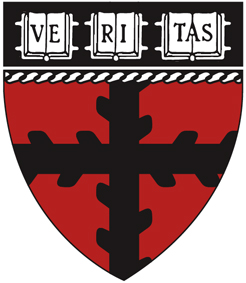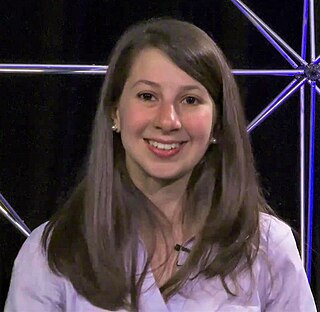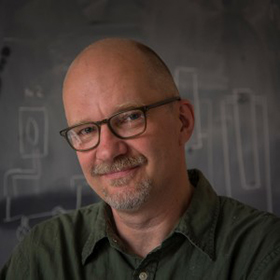
Edwin Herbert Land, ForMemRS, FRPS, Hon.MRI was an American scientist and inventor, best known as the co-founder of the Polaroid Corporation. He invented inexpensive filters for polarizing light, a practical system of in-camera instant photography, and the retinex theory of color vision, among other things. His Polaroid instant camera went on sale in late 1948 and made it possible for a picture to be taken and developed in 60 seconds or less.

The Family of Man was an ambitious exhibition of 503 photographs from 68 countries curated by Edward Steichen, the director of the New York City Museum of Modern Art's (MoMA) department of photography. According to Steichen, the exhibition represented the "culmination of his career". The title was taken from a line in a Carl Sandburg poem.

War photography involves photographing armed conflict and its effects on people and places. Photographers who participate in this genre may find themselves placed in harm's way, and are sometimes killed trying to get their pictures out of the war arena.
Jill Furmanovsky is a British photographer who has specialised in documenting rock musicians.

Spirit photography is a type of photography whose primary goal is to capture images of ghosts and other spiritual entities, especially in ghost hunting. It dates back to the late 19th century. The end of the American Civil War and the mid-19th Century Spiritualism movement contributed greatly to the popularity of spirit photography. Photographers such as William Mumler and William Hope ran thriving businesses taking photos of people with their supposed dead relatives. Both were shown to be frauds, but "true believers", such as Sir Arthur Conan Doyle, refused to accept the evidence as proof of a hoax.

George McClelland Whitesides is an American chemist and professor of chemistry at Harvard University. He is best known for his work in the areas of nuclear magnetic resonance spectroscopy, organometallic chemistry, molecular self-assembly, soft lithography, microfabrication, microfluidics, and nanotechnology. A prolific author and patent holder who has received many awards, he received the highest Hirsch index rating of all living chemists in 2011.

György Kepes was a Hungarian-born painter, photographer, designer, educator, and art theorist. After immigrating to the U.S. in 1937, he taught design at the New Bauhaus in Chicago. In 1967 he founded the Center for Advanced Visual Studies at the Massachusetts Institute of Technology (MIT) where he taught until his retirement in 1974.

The Harvard John A. Paulson School of Engineering and Applied Sciences (SEAS) is the engineering school within Harvard University's Faculty of Arts and Sciences, offering degrees in engineering and applied sciences to graduate students admitted directly to SEAS, and to undergraduates admitted first to Harvard College. Previously the Lawrence Scientific School and then the Division of Engineering and Applied Sciences, the Paulson School assumed its current structure in 2007. Francis J. Doyle III has been its dean since 2015.
Carrie Mae Weems is an American artist working in text, fabric, audio, digital images and installation video, and is best known for her photography. She achieved prominence through her early 1990s photographic project The Kitchen Table Series. Her photographs, films and videos focus on serious issues facing African Americans today, including racism, sexism, politics and personal identity.
Cecilia Rodriguez Aragon is an American computer scientist, professor, author, and champion aerobatic pilot who is best known as the co-inventor of the treap data structure, a type of binary search tree that orders nodes by adding a priority as well as a key to each node. She is also known for her work in data-intensive science and visual analytics of very large data sets, for which she received the prestigious Presidential Early Career Award for Scientists and Engineers (PECASE).

Nancy Hopkins, an American molecular biologist, is the Amgen, Inc. Professor of Biology at the Massachusetts Institute of Technology. She is a member of the National Academy of Sciences, the Institute of Medicine of the National Academy, and the American Academy of Arts and Sciences. She is known for her research identifying genes required for zebrafish development, and for her earlier research on gene expression in the bacterial virus, lambda, and on mouse RNA tumor viruses. She is also known for her work promoting equality of opportunity for women scientists in academia.

JoAnne Stubbe is an American chemist best known for her work on ribonucleotide reductases, for which she was awarded the National Medal of Science in 2009. In 2017, she retired as a Professor of Chemistry and Biology at the Massachusetts Institute of Technology.
The Lennart Nilsson Award recognizes outstanding contributions to scientific photography. Honorees are chosen based on the merits of their efforts in scientific imagery. It is administered by the foundation Stiftelsen Lennart Nilsson and awarded annually by Karolinska Institutet. The award sum is SEK 100,000. The award was inaugurated in 1998 in honor of Swedish photographer and scientist Lennart Nilsson (1922–2017) .

Vera Kistiakowsky was an American research physicist, teacher, and arms control activist. She was professor emerita at Massachusetts Institute of Technology in the physics department and Laboratory for Nuclear Science, and was an activist for women's participation in the sciences. Kistiakowsky was an expert in experimental particle physics and observational astrophysics. Her hobbies included climbing mountains, and she liked to maintain an energetic and fit lifestyle. She was the first woman appointed MIT professor of physics in 1972.
Suzanne Anker is an American visual artist and theorist. Considered a pioneer in Bio Art., she has been working on the relationship of art and the biological sciences for more than twenty five years. Her practice investigates the ways in which nature is being altered in the 21st century. Concerned with genetics, climate change, species extinction and toxic degradation, her work calls attention to the beauty of life and the "necessity for enlightened thinking about nature's 'tangled bank'." Anker frequently assembles with "pre-defined and found materials" botanical specimens, medical museum artifacts, laboratory apparatus, microscopic images and geological specimens.
Lola Flash is an American photographer whose work has often focused on social, LGBT and feminist issues. An active participant in ACT UP during the time of the AIDS epidemic in New York City, Flash was notably featured in the 1989 "Kissing Doesn't Kill" poster.
Barbara Pugh Norfleet is an American documentary photographer, author, curator, professor and social scientist who used photography as social documentary and allegory to examine American culture. Her photographic work is represented in museum collections around the world. She is founder and curator of a photographic archive on American social history at the Fogg Art Museum at Harvard University.

Katherine Louise Bouman is an American engineer and computer scientist working in the field of computer imagery. She led the development of an algorithm for imaging black holes, known as Continuous High-resolution Image Reconstruction using Patch priors (CHIRP), and was a member of the Event Horizon Telescope team that captured the first image of a black hole.

Photography in Sudan refers to both historical as well as to contemporary photographs taken in the cultural history of today's Republic of the Sudan. This includes the former territory of present-day South Sudan, as well as what was once Anglo-Egyptian Sudan, and some of the oldest photographs from the 1860s, taken during the Turkish-Egyptian rule (Turkiyya). As in other countries, the growing importance of photography for mass media like newspapers, as well as for amateur photographers has led to a wider photographic documentation and use of photographs in Sudan during the 20th century and beyond. In the 21st century, photography in Sudan has undergone important changes, mainly due to digital photography and distribution through social media and the Internet.

John Chervinsky (1961–2015) was an American photographer and Harvard-based particle accelerator engineer who exhibited his photographs internationally.














